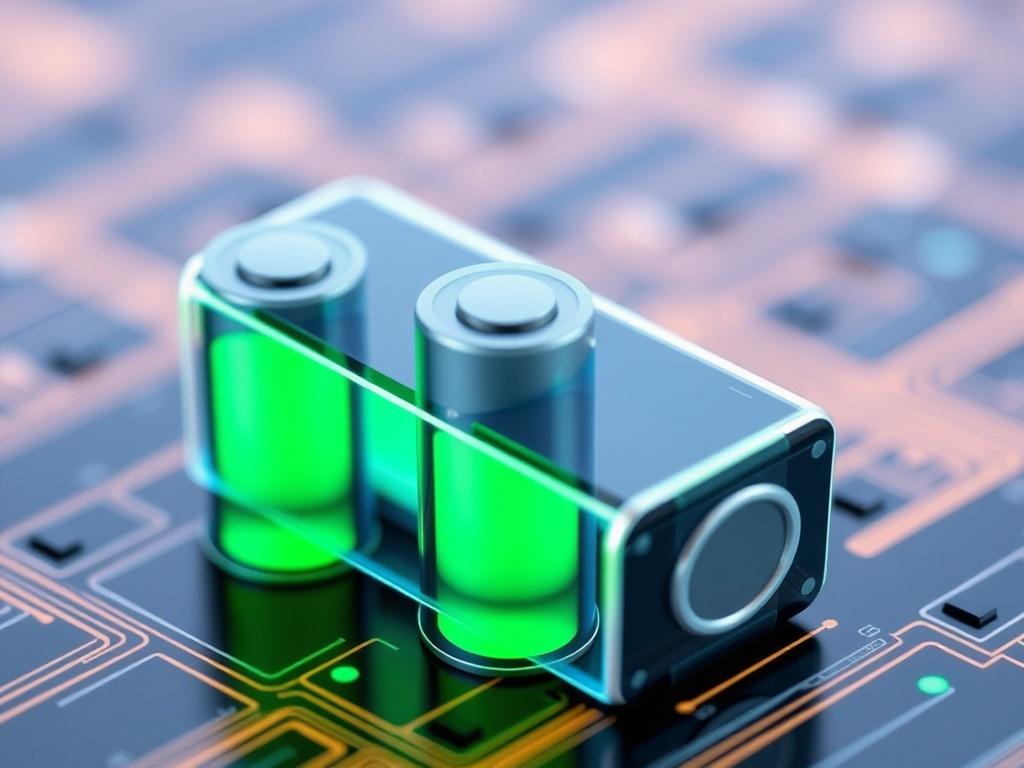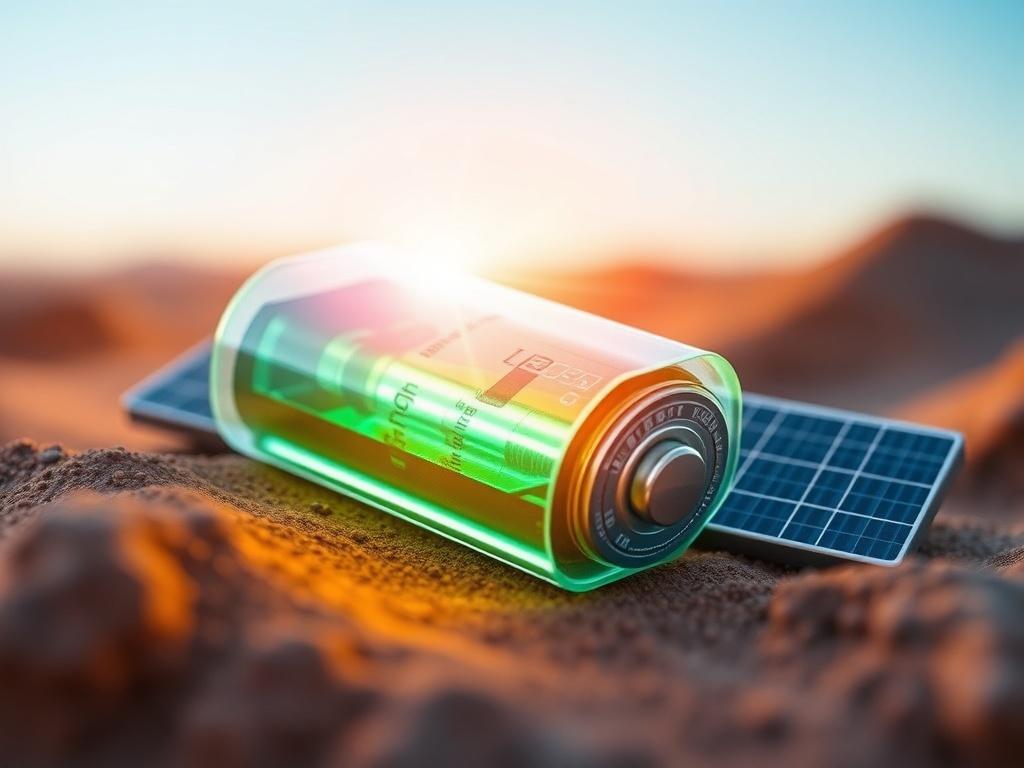- Introduction to Solid-State Batteries
- Understanding the Basics: What Are Solid-State Batteries?
- Why the Buzz Around Solid-State Batteries? Key Advantages Explained
- 1. Increased Energy Density
- 2. Enhanced Safety
- 3. Longer Lifespan and Durability
- 4. Cope Better with Temperature Extremes
- Challenges and Roadblocks on the Path to Widespread Adoption
- 1. Manufacturing Complexity and Cost
- 2. Material Limitations
- 3. Interfacial Resistance
- 4. Volume Changes During Operation
- Applications Driving Interest in Solid-State Batteries
- Electric Vehicles (EVs)
- Consumer Electronics
- Grid Storage and Renewable Energy
- Aerospace and Defense
- Comparison: Solid-State Batteries vs. Other Emerging Technologies
- Top Companies and Research Initiatives Pioneering Solid-State Battery Development
- What Does the Future Hold for Solid-State Batteries?
- Key Takeaways: Why Should We Care About Solid-State Batteries?
- Conclusion
Introduction to Solid-State Batteries
In recent years, the energy storage landscape has witnessed a surge of interest in an innovative technology: solid-state batteries. Unlike traditional lithium-ion batteries that use liquid or gel electrolytes, solid-state batteries replace these with solid electrolytes. This seemingly simple change could revolutionize how we store and use energy, impacting everything from electric vehicles to portable electronics and large-scale grid storage. But what exactly are solid-state batteries, and why are experts so excited about their potential? Let’s dive in and explore why solid-state batteries might truly be the future of energy storage.
Understanding the Basics: What Are Solid-State Batteries?
Solid-state batteries differ from conventional lithium-ion batteries primarily in the electrolyte used to conduct lithium ions between the anode and cathode. In lithium-ion batteries, this electrolyte is usually a liquid that is flammable and susceptible to leakage. Solid-state batteries, on the other hand, use a solid electrolyte, which can be made from ceramics, glass, sulfides, or polymers. This fundamental shift in design offers several advantages, including enhanced safety, higher energy density, and improved longevity.
To illustrate the main differences, consider the following table:
| Feature | Traditional Lithium-Ion Battery | Solid-State Battery |
|---|---|---|
| Electrolyte | Liquid or gel (flammable) | Solid (non-flammable) |
| Energy Density | ~250 Wh/kg | Potentially 400-500 Wh/kg or more |
| Safety | Risk of leakage and fire | Safer; reduced fire risk |
| Lifespan | 500-1,000 cycles typically | Potentially more cycles; less degradation |
| Operating Temperature | Wide but limited by liquid stability | More stable at high and low temperatures |
From this comparison, it’s clear that solid-state batteries hold some promising benefits, but the technology is still evolving and faces challenges before it can be adopted widely.
Why the Buzz Around Solid-State Batteries? Key Advantages Explained

Many industry leaders and researchers believe solid-state batteries have the potential to unlock unprecedented advancements in energy storage. Here’s why:
1. Increased Energy Density
Energy density refers to how much energy a battery can store relative to its weight or volume. Solid-state batteries, with their stable solid electrolyte, can accommodate lithium metal anodes, which are lighter and store more energy than the graphite anodes used in conventional lithium-ion batteries. This means electric vehicles powered by solid-state batteries could travel farther on a single charge, giving them a significant edge over current EVs.
2. Enhanced Safety
One of the biggest concerns with traditional lithium-ion batteries is safety. The flammable liquid electrolytes can leak, leading to short circuits, fires, or even explosions. Solid-state batteries, using non-flammable solid electrolytes, virtually eliminate this risk. Their robustness makes them especially appealing for applications where safety is paramount, like in electric cars or aerospace.
3. Longer Lifespan and Durability
Solid-state batteries tend to experience less degradation over time because solid electrolytes are less prone to forming dendrites—tiny lithium filaments that can pierce through the battery and cause failures. This results in batteries that can handle more charge-discharge cycles without significant loss of performance, meaning devices last longer and require less frequent replacement.
4. Cope Better with Temperature Extremes
Current lithium-ion batteries have limited operating temperature ranges, often requiring additional cooling for electric vehicles or devices running under intense conditions. Solid electrolytes maintain their stability over wider temperature ranges, allowing devices to function efficiently in extreme heat or cold without risking damage.
Challenges and Roadblocks on the Path to Widespread Adoption
As promising as solid-state batteries are, several hurdles still stand in the way of their mass adoption.
1. Manufacturing Complexity and Cost
Unlike traditional lithium-ion batteries, solid-state batteries require new manufacturing methods and materials that are currently expensive and slow to produce. Scaling up production to meet the demand of global markets, especially for electric vehicles, is a significant challenge.
2. Material Limitations
Finding the ideal solid electrolyte material is a complex quest. The electrolyte must be highly conductive to lithium ions, stable, non-toxic, and compatible with the anode and cathode materials. Some solid electrolytes suffer from brittleness or chemical instability, which can compromise battery performance and lifespan.
3. Interfacial Resistance
The interface between the solid electrolyte and electrodes often has high resistance, reducing efficiency. Researchers are actively exploring ways to reduce this resistance to ensure batteries deliver power as quickly and reliably as possible.
4. Volume Changes During Operation
Battery electrodes can expand and contract during charging and discharging. Solid electrolytes can sometimes struggle to accommodate these changes, leading to physical stresses that can degrade the battery over time.
Applications Driving Interest in Solid-State Batteries

The promise of solid-state batteries has captured a wide range of industries, each eager to leverage their unique benefits.
Electric Vehicles (EVs)
For electric vehicles, longer range, shorter charging times, and improved safety are critical. Automakers like Toyota, Volkswagen, and BMW are investing heavily in solid-state battery research, aiming to introduce vehicles equipped with the technology within the next decade. Solid-state batteries could be a game changer, enabling EVs to outperform gasoline-powered cars on every front.
Consumer Electronics
Imagine smartphones, laptops, and wearable devices that charge faster and last days longer. The increased energy density and safety improvements solid-state batteries offer are highly attractive to electronics manufacturers, promising lighter and thinner devices without sacrificing battery life.
Grid Storage and Renewable Energy
Energy storage is fundamental for balancing supply and demand in power grids, especially as renewable energy sources like solar and wind grow. Solid-state batteries could provide robust, durable, and safer storage solutions capable of handling large energy loads for extended periods.
Aerospace and Defense
In aerospace applications, weight reduction and safety are critical. Solid-state batteries could help power satellites, drones, and defense equipment with more reliable and lightweight energy storage.
Comparison: Solid-State Batteries vs. Other Emerging Technologies
It’s also useful to look at where solid-state batteries stand in relation to other energy storage technologies competing for attention.
| Technology | Energy Density | Safety | Lifespan | Commercial Status |
|---|---|---|---|---|
| Solid-State Batteries | High (~400-500 Wh/kg) | Excellent (non-flammable) | Long (thousands of cycles) | Early commercial prototypes |
| Lithium-Ion Batteries | Moderate (~250 Wh/kg) | Moderate (flammable electrolyte) | Moderate (500-1,000 cycles) | Widely commercialized |
| Sodium-Ion Batteries | Lower (~100-150 Wh/kg) | Good (non-flammable electrolyte) | Long (good cycle life) | Early commercial stage |
| Flow Batteries | Low to moderate | Excellent | Very Long | Used in large-scale storage |
Solid-state batteries strike an attractive balance between safety, energy density, and lifespan, but their commercial maturity still lags behind lithium-ion solutions.
Top Companies and Research Initiatives Pioneering Solid-State Battery Development
Several leading companies and research institutions are driving innovation with heavy investment and breakthroughs.
- Toyota: One of the first automakers to publicly commit to solid-state battery technology, targeting mass-market vehicles by the mid-2020s.
- QuantumScape: A Silicon Valley startup focused on solid-state lithium-metal batteries, partnered with Volkswagen to advance automotive applications.
- Solid Power: Developing solid-state batteries for electric vehicles and aerospace with backing from Ford and BMW.
- Samsung SDI: Researching all-solid-state battery solutions for electronics and EVs.
- University Research Labs: MIT, Stanford, and other institutions are discovering new materials and techniques to overcome current limitations.
This collaborative ecosystem of startups, tech giants, and academic labs points to solid-state batteries rapidly moving from experimental to practical solutions.
What Does the Future Hold for Solid-State Batteries?

Predicting the future of technology is never simple, but based on current trends and research, solid-state batteries are set to play a pivotal role in energy storage evolution. As research overcomes manufacturing challenges and cost barriers, we may see the following shifts in the coming decade:
- Electric vehicles with dramatically extended ranges and shorter charge times
- Consumer electronics with longer battery life and reduced form factors
- Improved renewable energy integration through durable and safe grid storage batteries
- Expanded adoption in industries requiring high safety and energy density, such as aerospace and defense
- Potential reductions in battery-related environmental impact due to longer lifespans and safer materials
Moreover, as governments worldwide push for greener technologies and energy independence, investment into solid-state battery research and manufacturing is only expected to increase.
Key Takeaways: Why Should We Care About Solid-State Batteries?
To wrap up some of the most compelling reasons solid-state batteries attract so much attention:
- Safety First: Their non-flammable solid electrolytes drastically reduce fire risk.
- Better Performance: Higher energy density means longer-lasting batteries that weigh less.
- Durability: Longer lifespan reduces waste and replacement costs.
- Application Versatility: From cars to grid, almost any sector benefits.
- Environmental Impact: Potentially greener battery production and disposal.
Conclusion
Solid-state batteries represent a transformative leap forward in energy storage technology, promising to deliver safer, more efficient, and longer-lasting power solutions that could profoundly impact various industries—from electric vehicles to portable devices and renewable energy systems. While challenges such as manufacturing costs, material limitations, and scalability remain, ongoing research and development are rapidly making solid-state batteries a viable and exciting alternative to conventional lithium-ion batteries. As the world increasingly relies on clean and reliable energy, solid-state batteries are well-positioned to become the cornerstone of the future’s energy landscape, fueling innovation and sustainability for years to come.
Как вам статья?







